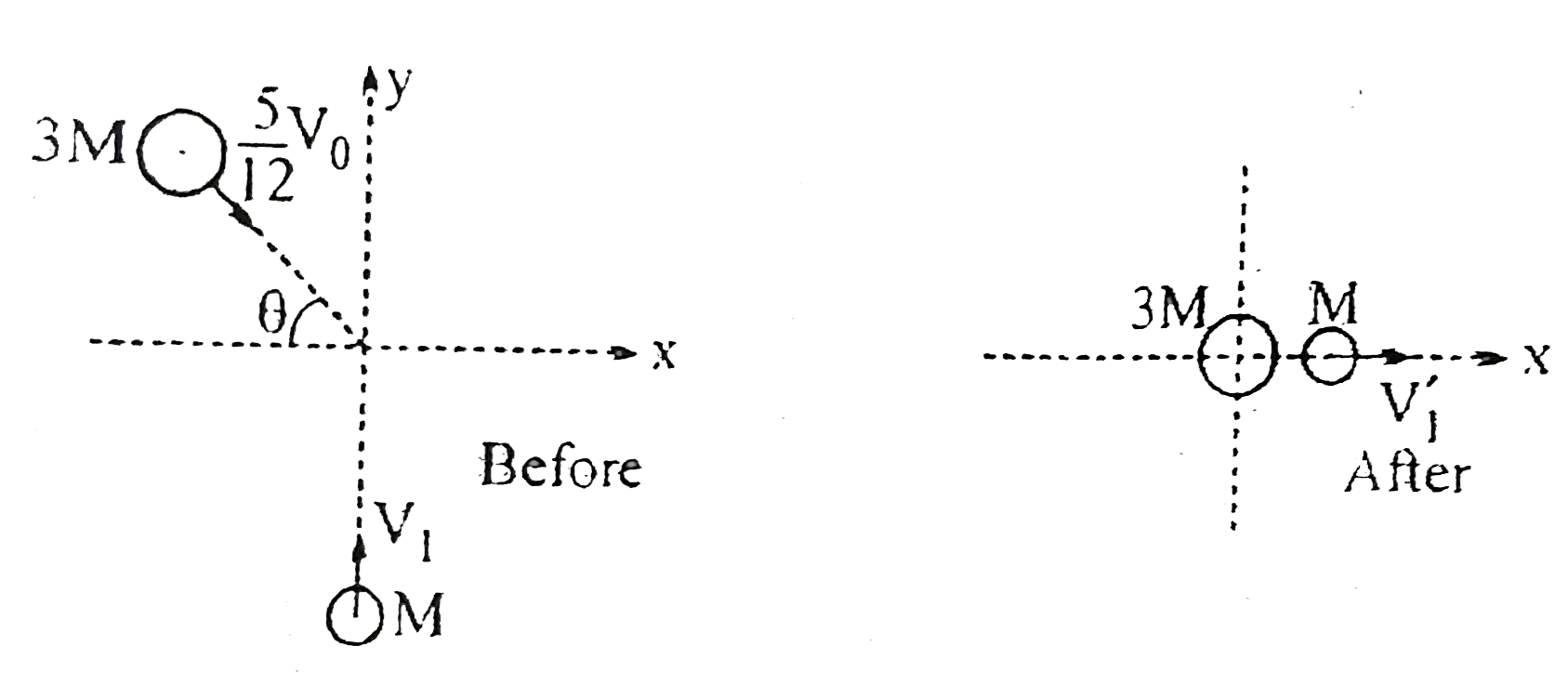An object located at the origin at rest has mass M. It explodes into three pieces having masses M/4, M/3 and 5M/12. The pieces move on a horizontal frictionless plane (call it x-y plane). The fragment with mass M/4 moves with velocity 5.0ms−1 at 37° to the x-axis. The fragment of mass M/3 moves wifh velocity 4.0ms−1 in the direction making an angle 45° to the x-axis.
a) What are the velocitity components of the third piece ?
b) What can be said about the motion of centre of mass of the system after tile explosion ?
The correct Answer is:−0.13ms−1,−4.0ms−1; CM remains at rest
Similar Questions
A particle of mass 4m explodes into three pieces of masses m,m and 2m The equal masses move along X-axis and Y-axis with velocities 4ms−1 and 6ms−1 respectively. The magnitude of the velocity of the heavier mass is
View SolutionA shell of mass m moving with velocity v suddenly breaks into 2 pieces. The part having mass m /4 remains stationary. The velocity of the other shell will be
View Solution
Knowledge Check
A shell of mass m moving with velocity v suddenly breaks into 2 pieces. The part having mass m /4 remains stationary. The velocity of the other shell will be
AvB2vC34vD43vTwo masses M and 3M collide on a horizontal frictionless surface as shown. Before the collision the mass M has a velocity V1 in the y-direction. The mass 3M has a velocity (5/12)V0 making an angle thetha to the x-axis as shown. After the collision the mass 3M comes to rest and the mass M moves along the x-axis with the velocity V1 (Given sinthetha=3/5) Neglect gravity.
 AThe speed V1 of mass M before collision is 34V0BThe speed V1 of mass M before collision is V04CThe speed V1 of mass M after collision is V02DThe speed V1 of mass M after collision is V0
AThe speed V1 of mass M before collision is 34V0BThe speed V1 of mass M before collision is V04CThe speed V1 of mass M after collision is V02DThe speed V1 of mass M after collision is V0The spacecraft of mass M moves with velocity v in free space at first, then it explodes breaking into two pieces. If after explosion a piece of mass m comes to rest, the other piece of space craft will have a velocity :
AMV/(M-m)BMV/(M+m)CmV/((M-m)DmV/(M+m)
A particle of mass m moving with a velocity (3ˆi+2ˆj)ms−1 collides with another body of mass M and finally moves with velocity (−2ˆi+ˆj)ms−1. Then during the collision
View SolutionA particle of mass m moving with a velocity (3ˆi+2ˆj)ms−1 collides with another body of mass M and finally moves with velocity (−2ˆi+ˆj)ms−1. Then during the collision
View SolutionA big particle of mass (3+m) kg blasts into 3 pieces , such that a particle of mass 1 kg moves along x - axis , with velocity 2ms−1 and a particle of mass 2 kg moves with velocity 1ms−1 perpendicular to direction of 1 kg particle . If the third particle moves with velocity √2ms−1, then m is
View SolutionA body of mass m moving with velocity 4 km/h collides with a body of mass 3 m at rest. Now the coalesced mass starts to move with a velocity of:
View SolutionStationary bomb explodesinto three pieces. One piece of 2kg mass moves with a velocity of 8ms−1 at right angles to the other piece of mass 1 kg moving. With a velocity of 12ms−1 . If the mass of the third piece is 0.5kg, then its velocity is
View Solution
